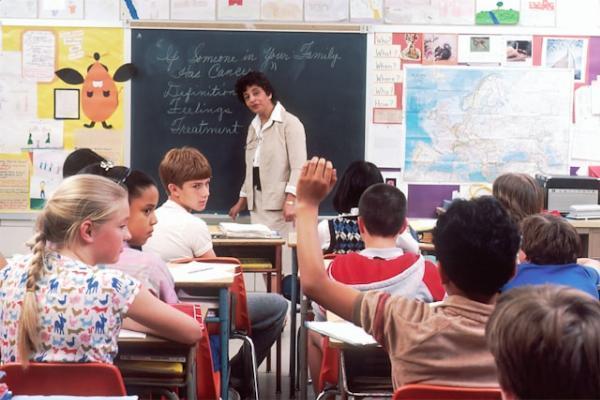What is a Classroom Management Plan?

Strong 8k brings an ultra-HD IPTV experience to your living room and your pocket.
Introduction
Managing a classroom can feel like trying to herd cats, but that's where a classroom management plan comes in handy. So, what exactly is a classroom management plan? Simply put, it's a structured approach that teachers use to keep their classrooms running smoothly. It involves setting clear rules, establishing procedures, using positive reinforcement, and implementing consequences for misbehavior. All of these elements work together to create a positive and productive learning environment.
Components of a Classroom Management Plan
Rules and Expectations
One of the first things to tackle in a classroom management plan is setting clear rules and expectations. Imagine trying to play a game without knowing the rules – it would be chaos, right? The same goes for a classroom. Students need to know what's expected of them to behave appropriately.
Setting Clear Rules
Setting rules might seem straightforward, but it's essential to be specific. Vague rules like "Be respectful" can be open to interpretation. Instead, try something more precise, like "Listen quietly when others are speaking."
Communicating Expectations
Once you've set the rules, the next step is communicating them effectively. This can be done through classroom discussions, posters, or even role-playing scenarios to ensure everyone understands what's expected.
Procedures and Routines
Another crucial component is establishing procedures and routines. These are the backbone of classroom management, ensuring that daily activities run smoothly and efficiently.
Daily Procedures
Daily procedures might include how students enter the classroom, how they turn in homework, or how they transition between activities. Consistency is key here – the more predictable the routine, the more comfortable and focused students will be.
Classroom Routines
Classroom routines extend beyond daily procedures. They encompass the overall flow of the day, including how to handle group work, bathroom breaks, and end-of-day clean-up.
Positive Reinforcement
Positive reinforcement is like the secret sauce of classroom management. It involves encouraging and rewarding good behavior, which can be more effective than focusing solely on punishments.
Types of Positive Reinforcement
Positive reinforcement can take many forms, from verbal praise to tangible rewards like stickers or extra recess time. The key is to recognize and celebrate good behaviour consistently.
Benefits of Positive Reinforcement
The benefits are numerous: it boosts students' self-esteem, encourages a positive classroom atmosphere, and motivates students to continue behaving well.
Consequences for Misbehavior
Of course, no classroom management plan is complete without consequences for misbehavior. These need to be fair, consistent, and appropriate to the behavior.
Types of Consequences
Consequences can range from verbal warnings to time-outs or even parent-teacher meetings for more severe infractions. The goal is to address the behavior without shaming the student.
Implementing Consequences Fairly
Fair implementation is crucial. Students need to understand that the consequences are not arbitrary but are a result of their actions.
Classroom Environment
The physical environment of the classroom also plays a significant role in classroom management. A well-organized and inviting space can make a big difference.
Physical Arrangement
Think about how the desks are arranged – can students see the board easily? Is there enough space for group activities? The layout should support the learning goals and minimize distractions.
Creating a Conducive Learning Environment
Beyond the physical setup, creating a conducive learning environment involves fostering a positive and inclusive atmosphere where all students feel valued and respected.
Communication Strategies
Effective communication is vital for a successful classroom management plan. This includes communication with students, parents, and other stakeholders.
With Students
Regular check-ins, feedback, and open discussions help keep students engaged and informed about their progress and expectations.
With Parents and Stakeholders
Keeping parents in the loop through newsletters, emails, or meetings can help reinforce classroom expectations and support student behavior at home.
Conflict Resolution Techniques
Conflicts are inevitable, but how they are handled can make a big difference in maintaining a positive classroom environment.
Peer Mediation
Peer mediation involves students helping each other resolve conflicts, fostering a sense of responsibility and empathy.
Restorative Practices
Restorative practices focus on repairing harm and restoring relationships, rather than simply punishing misbehavior. This can include group discussions or individual apologies.
Flexibility and Adaptability
No classroom management plan is one-size-fits-all. It's essential to be flexible and adapt to the unique dynamics of your classroom.
Adapting to Classroom Dynamics
Every class is different, and what works for one group might not work for another. Be prepared to tweak your plan as needed.
Individual Student Needs
Some students may require additional support or accommodations. Recognizing and addressing these needs is crucial for an inclusive classroom.
Benefits of a Classroom Management Plan
Improved Student Behavior
With clear rules and consistent consequences, students are more likely to behave appropriately, reducing disruptions.
Enhanced Learning Environment
A well-managed classroom allows for more effective teaching and learning, as students can focus on their work.
Reduced Teacher Stress
Having a plan in place helps teachers manage behavior more efficiently, reducing stress and allowing them to focus on instruction.
Positive Classroom Climate
A positive classroom climate fosters mutual respect and cooperation among students and between students and the teacher.
Creating a Classroom Management Plan
Assessing Classroom Needs
Before you can create a plan, you need to assess the specific needs of your classroom. This might involve observing student behavior, gathering input from colleagues, and reflecting on past experiences.
Setting Realistic Goals
Once you understand the needs, set realistic and achievable goals for your classroom management plan. This might include reducing disruptions or increasing student engagement.
Developing Rules and Procedures
With your goals in mind, develop clear rules and procedures that will help you achieve them. Remember to involve students in this process to get their buy-in.
Implementing the Plan
Once your plan is ready, it's time to put it into action. Communicate your rules and procedures clearly and consistently from day one.
Monitoring and Adjusting the Plan
A classroom management plan is not set in stone. Continuously monitor its effectiveness and be prepared to make adjustments as needed.
Conclusion
In conclusion, a classroom management plan is an essential tool for creating a positive and productive learning environment. By setting clear rules, establishing procedures, using positive reinforcement, and implementing fair consequences, teachers can manage their classrooms effectively and create a space where all students can thrive.
FAQs
What are the key components of a classroom management plan?
The key components include setting clear rules and expectations, establishing procedures and routines, using positive reinforcement, implementing consequences for misbehaviour, creating a conducive classroom environment, effective communication strategies, conflict resolution techniques, and being flexible and adaptable.
How can positive reinforcement be used effectively in the classroom?
Positive reinforcement can be used effectively by consistently recognizing and rewarding good behavior. This can include verbal praise, tangible rewards, and special privileges. The key is to be specific about what behavior is being rewarded and to ensure that all students have an opportunity to receive positive reinforcement.
What are some effective conflict resolution techniques for classrooms?
Effective conflict resolution techniques include peer mediation, where students help each other resolve conflicts, and restorative practices, which focus on repairing harm and restoring relationships. These techniques encourage students to take responsibility for their actions and understand the impact of their behavior on others.
How can teachers adapt their classroom management plan to individual student needs?
Teachers can adapt their classroom management plan by being flexible and responsive to the unique needs of their students. This might involve providing additional support or accommodations for students with specific needs, adjusting the plan based on the dynamics of the classroom, and continuously monitoring and adjusting the plan as needed.
Why is a classroom management plan important for teachers?
A classroom management plan is important for teachers because it provides a structured approach to managing student behavior, creating a positive learning environment, reducing disruptions, and allowing for more effective teaching. It also helps reduce teacher stress by providing clear guidelines and strategies for dealing with behavior issues.
Note: IndiBlogHub features both user-submitted and editorial content. We do not verify third-party contributions. Read our Disclaimer and Privacy Policyfor details.







